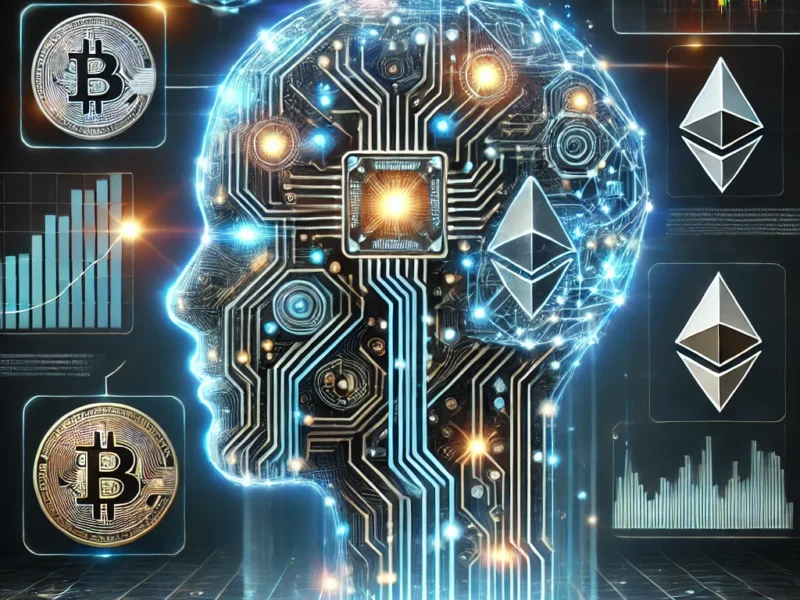Definition – What does Artificial Intelligence (AI) mean?
Artificial intelligence, also known as machine intelligence, is a branch of computer science that aims to imbue software with the ability to analyze its environment using either predetermined rules and search algorithms, or pattern recognizing machine learning models, and then make decisions based on those analyses.In this way, AI attempts to mimic biological intelligence to allow the software application or system to act with varying degrees of autonomy, thereby reducing manual human intervention for a wide range of functions.modern definitions of what it means to create intelligence are more specific. Francois Chollet, AI researcher at Google and creator of the machine-learning software library Keras, has said intelligence is tied to a system’s ability to adapt and improvise in a new environment, to generalise its knowledge and apply it to unfamiliar scenarios. “Intelligence is not skill itself, it’s not what you can do, it’s how well and how efficiently you can learn new things.”
Raghu Nair who joined The Hive early last year was one such candidate when asked if artificial Intelligence could someday reach superhuman levels. He says he sees few concrete examples around today but they seem very close – indeed there have been several reports about researchers working tirelessly day and night inside machines trying their best to build intelligent systems capable like Mark Zuckerberg even while facing no guarantee against failures due anything from internal errors to external events including terrorism. But let us assume humans always work together (even an army does) so why choose only two teams? This might help them feel better: A paper by John Sarno called Artificial Intelligence Research Policy Implications 201
Techopedia explains Artificial Intelligence (AI)
While AI often invokes images of the sentient computer overlord of science fiction, the current reality is far different. At its heart, AI uses the same basic algorithmic functions that drive traditional software, but applies them in a different way. A standard warehouse management system, for example, can show the current levels of various products, while an intelligent one could identify shortages, analyze the cause and its effect on the overall supply chain, and even take steps to correct it. Artificial intelligence can be allowed to replace a whole system, making all decisions end-to-end, or it can be used to enhance a specific process. For example, analyzing video footage to recognize gestures, or replacing peripheral devices (keyboard, mouse, touchscreen) with a speech to text system., giving the impression that one is interacting with a sentient being. Just as philosophers debate the nature of man and the existence of free will, science experts debate the various types of AI.
I should also note that just because something seems “human” doesn’t mean it’s human; everything has been built by scientists using many tools – including artificial intelligence–that have their own strengths and weaknesses. Most importantly however: Humans may never fully understand how our bodies work anymore than we understood evolution before humans went extinct, so you don”t need to worry about your mind becoming detached from what makes you feel alive.” ―Bryce Mignola (credited author).
This essay was originally published at Science Adventure, where I’ve decided against publishing additional stories due generally unpredictable events during my busy time here. Thank ya! If anyone want
The Evolving Stages of Artificial Intelligence
Narrow (Weak) AI
Capable of performing only a limited set of predetermined functions; think, autonomous cars, retail kiosks, etc.;
General (Strong) AI
Said to equal the human mind’s ability to function autonomously according to a wide set of stimuli;
Super AI
Which will one day exceed human intelligence (and conceivably take over the world).
At the moment, Narrow AI is only beginning to enter mainstream computing applications.
Four Distinct Categories of Artificial Intelligence
Reactive AI
Can only react to existing situations, not past experiences.
Limited Memory AI
Relies on stored data to learn from recent experiences to make decisions.
Theory of Mind AI
Capable of comprehending conversational speech, emotions, non-verbal cues and other intuitive elements;
Self-Aware AI
Human-level consciousness with its own desires, goals and objectives.
A good way to visualize these distinctions would be an AI-driven poker player. A reactive machine would base decisions only on the current hand in play, while a limited memory version would consider past decisions and player profiles.
Using Theory of Mind, however, the program would pick up on speech and facial cues, and a self-aware AI might start to consider if there is something more worthwhile to do than play poker.
Artificial Intelligence On a Practical Level
AI is currently being applied to a range of functions both in the lab and in commercial/consumer settings:
Speech Recognition
Allows intelligent systems to convert human speech into text or code.
Natural Language Processing
A subset of speech recognition, enables conversational interaction between humans and computers.
Computer Vision
Allows a machine to scan an image and identify it using comparative analysis.
Perhaps the most revolutionary aspect of AI, however, is that it allows software to rewrite itself as it adapts to its environment.
Unlike traditional upgrade programs that take years and are often buggy, or even newer DevOps processes that push changes quickly with less disruption, AI allows a given program to optimize itself to highly specialized use cases.
This should not only lower the cost of software licensing and support, it should provide steadily improving performance and the development of unique processes that deliver crucial advantages in an increasingly competitive economy.
While these technologies cannot yet become fully realized by our technology companies on any time scale (the same applies for conventional IT), we now have many tools available at all levels of sophistication aimed specifically toward managing this transition from old fashioned manual work into automated systems where intelligence can be driven more seamlessly; allowing us change automation faster than ever before.
